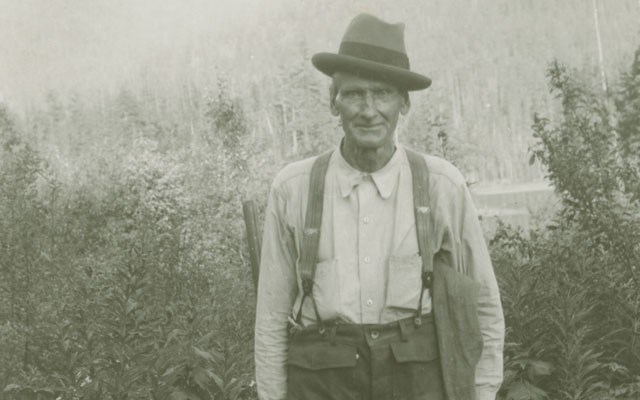The Whistler Museum is calling for the return of a decades-old animal trap that provides a crucial link to one of the resort's earliest — and most elusive — settlers.
Last week, local resident and head of the Alpine Club of Canada's Whistler chapter Mitch Sulkers was hiking on Sproatt Mountain when he noticed an old wire spring trap had disappeared from its usual location inside the hollow of a dead tree. "For 43 years I've hiked past it, most recently 2-3 times a week. Yesterday I was shocked to find it missing," he wrote on Instagram. (Sulkers could not be reached by deadline.) "Whoever stole it probably didn't realize its historical significance."
Although she couldn't say for sure, Whistler Museum collections manager Alyssa Bruijns said all signs point to the tree having been modified close to a century ago by one of Whistler's most mysterious historical figures: Harry Horstman.
"It's very likely, just because not many other people lived up on Sproatt or even knew the area," she explained.
Horstman came to Whistler — then called Alta Lake — around 1913 with dreams of striking it rich. Originally from Kansas, he mined Sproatt for copper for a portion of the year in a cabin he had built at the ear-popping elevation of 1,615 metres. (Remnants of the cabin — along with several mining tunnels — can still be found on Sproatt.)
The traps Horstman set helped sustain him through the gruelling work, and, given how long the wire trap remained in place before it went missing, Bruijns believes there's a chance it was actually made by the evasive prospector himself.
"Just the fact that it's been there that long, even if it wasn't (Horstman), it was someone who was living in the valley quite early on," she said.
Much of what is known about Horstman, by all accounts an odd, solitary man with a distaste for skiing, comes from a smattering of oral interviews with some of the valley's early settlers, making the recovery of an artifact with direct ties to Whistler's frontier past all the more important, noted Bruijns.
"It is quite difficult to preserve the historical significance of the valley just because it's changing so fast and everything's being developed really quickly," she said. "There are a lot of unknowns still. We really base what we have (at the museum) on what people have donated and what the early residents have told us. We can't know things for sure just because things weren't documented very well at that time, but we're doing our best to preserve as much as we can."
Anyone with information on the missing trap is asked to contact Sulkers at accwhistler@shaw.ca.
For more information on Horstman, visit https://blog.whistlermuseum.org/2012/03/03/the-mysterious-harry-hortsman/.




